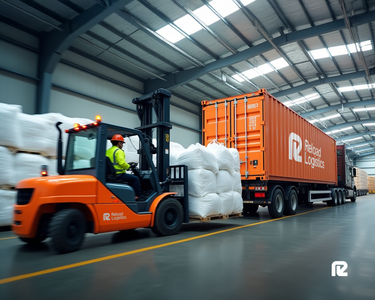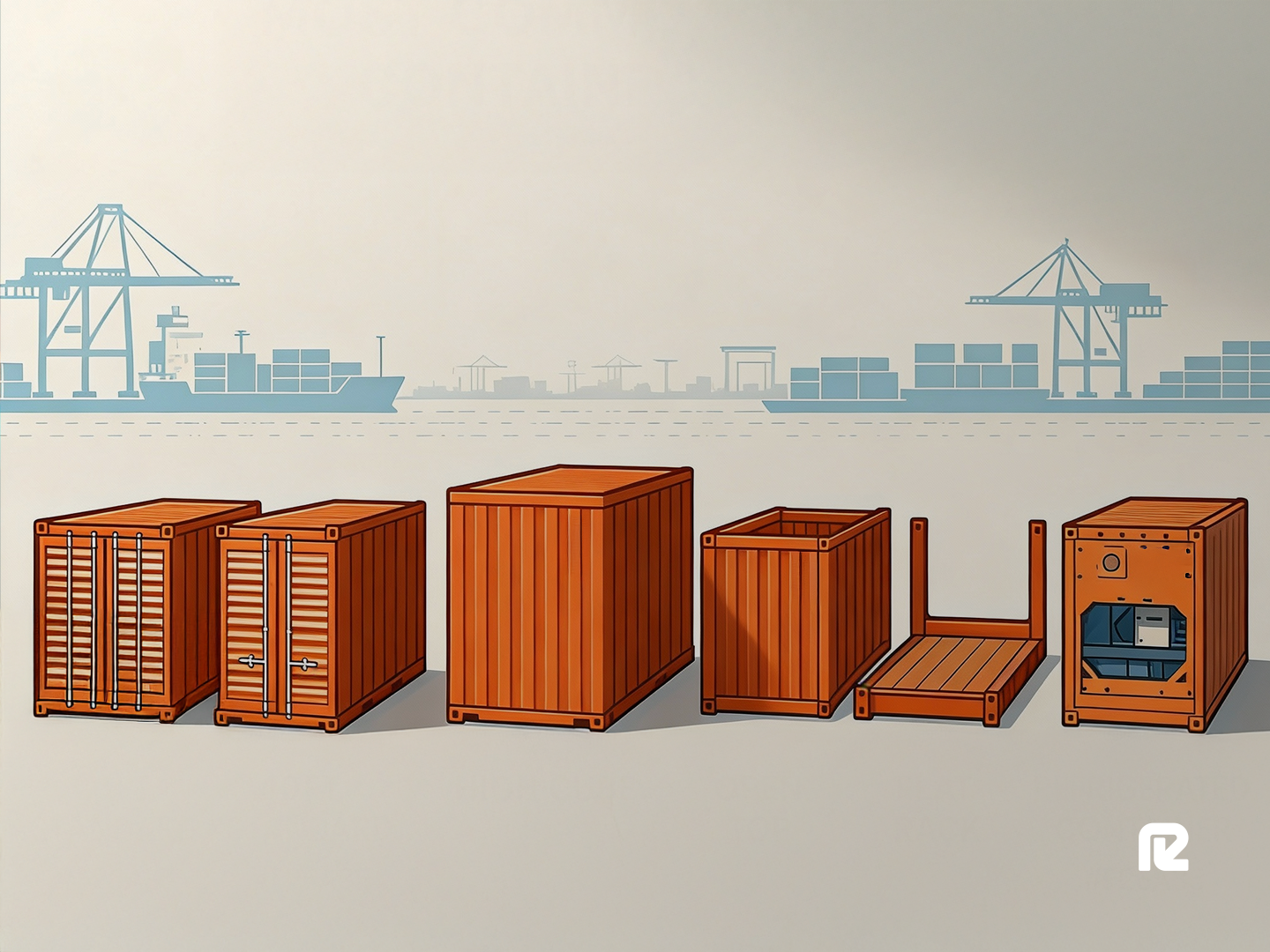Cross-Docking in Supply Chain Management


Cross-docking is useful in logistics as businesses are under increasing pressure to move and deliver goods faster. Traditional warehousing is still essential and effective for many industries, but it holds back goods that don’t need to be stored for days or weeks. When executed well, cross-docking shortens lead times, reduces inventory holding costs, and keeps goods flowing smoothly.
In regions like Southern Africa, where supply chains span vast distances, cross-border trade is growing under AfCFTA, and more industries depend on time-sensitive deliveries. This article will go through the different types of cross-docking, how it works compared to other techniques, and its advantages.
What is Cross-Docking in Supply Chain?
Cross-docking is a logistics procedure designed to keep goods in motion. When products arrive at a facility, like a warehouse or a distribution center, they are unloaded from the inbound vehicle, and, instead of being stored at that facility for an extended period, they are instead loaded onto the outbound vehicle as quickly as possible.
Throughout Southern Africa, this process is increasingly being adopted to move goods between ports and manufacturing centers, speeding up the entire process of delivery.
Basic Principles
In cross-dock warehousing, the aim is to move the products from the supplier to the end customer with as few handling steps as possible. This minimizes storage and costs associated while maximizing the speed of delivery.
Typically, a cross-docking facility is designed with a large number of dock doors, large staging areas, and clear lanes for inbound and outbound flows. Technology is always helpful in this process, with barcode scanning, warehouse management systems, and real-time updates being a core part of cross-docking running efficiently.
How Cross-Docking Works Step by Step
There are five main steps within cross-docking to move goods as quickly as possible:
1. Inbound Delivery—Shipments arrive from suppliers or ports.
2. Unloading & Verification—Staff unload and scan goods to verify quantities, check for damage, and match documentation.
3. Sorting & Allocation—Products are grouped by order, delivery route, or customer. Advanced WMS tools ensure sorting accuracy and efficiency.
4. Consolidation or Deconsolidation—Smaller shipments might be combined into a full truckload to optimize costs. Bulk shipments may be split to serve multiple destinations.
5. Outbound Loading—Goods are loaded directly onto outbound trucks, rail cars, or air freight containers for immediate delivery.
The planning of these steps is critical; clear communication between supply chain partners and well-trained teams that can operate quickly while not compromising on quality is essential to the smooth running of cross-docking.
When Should Businesses Use Cross-Docking?
There are several product types and industries that fit well with cross-docking:
• Perishable and soft commodities in the food and beverage industry.
• Seasonal items with short sales windows in manufacturing.
• High-value mining outputs for rapid export.
Types of Cross-Docking
There are several different variations to cross-docking according to different supply chain needs:
Pre-Distribution Cross-Docking
Goods are pre-assigned to customers or specific orders before they arrive at the facility. Once they arrive, they are unloaded, staged, and then immediately loaded onto the appropriate outbound transport. This type of cross-docking works well for stable demand patterns, like when replenishing stocks based on store orders.
Post-Distribution Cross-Docking
With this, the allocation decisions are made once the goods arrive at the facility, and not before. This allows for adjustments in real time based on data such as real-time sales or up-to-date market conditions. Sometimes, demand spikes in a certain region suddenly, and so post-distribution cross-docking means this inventory can be redirected accordingly.
Continuous Cross-Docking
When shipments arrive, they are transferred directly to outbound transport with almost no staging time at all. This is great for high-priority shipments like perishables, pharmaceuticals, or urgent parts.
Consolidation and Deconsolidation Cross-Docking
This means that multiple small shipments that are all going to the same end location can be consolidated into one larger load for efficiency. Also, large bulk shipments can be broken down, or deconsolidated, into smaller deliveries, ideal for distributing them to multiple cities from the cross-docking facility.
Comparison with Other Logistics Techniques
Cross-Docking vs. Drop Shipping
Drop shipping is a process of sending products from the supplier directly to the end buyer. This minimizes handling but also removes opportunities for consolidation, quality checks, or optimization for regional transportation. This is in contrast to cross-docking, which retains these benefits while still keeping goods on the move quickly.
Cross-Docking vs. Direct Shipment
Direct shipment moves goods from their origin to their final destination without stopping. This can be efficient, but it can lead to underutilized transport capacities. Cross-docking solves this issue by using consolidation, allowing multiple suppliers to share the same outbound loads, reducing empty space and transport costs, while still achieving fast deliveries.
Comparing Cross-Docking with Traditional Warehousing
Efficiency and Speed
Traditional warehousing involves storing goods for days or weeks, which slows the supply chain down. Cross-docking turns goods around in hours, making it more responsive to customer needs.
Cost Implications
By reducing storage time, businesses save on warehouse rent, utilities, and labor. Industry studies suggest that, when implemented correctly, cross-docking can cut shipment costs by 25%.
Flexibility and Scalability in Supply Chain Management
Cross-docking facilities can scale operations up or down quickly, handling seasonal peaks or unexpected surges in demand without needing additional long-term storage.
Advantages and Challenges of Cross-Docking
A well-planned cross-docking warehouse operation has many advantages, making it an attractive option for many industries; however, there are, of course, some challenges that should be recognized. Balancing these is essential to maximize the value of warehouse cross-docking in any supply chain.
The main advantages of cross-docking include:
• Faster Delivery Times: Shorter dwell times and time in storage mean goods reach their destination sooner, improving competitiveness.
• Cost Reduction: Less storage means fewer overhead costs in inventory storage and handling fees, freeing up working capital for other priorities.
• Improved Inventory Management: Just-in-time delivery reduces the risk of overstocking.
• Enhanced Customer Satisfaction: Quicker deliveries and reliable fulfillment contribute to stronger customer loyalty.
Cross-docking also presents some operational challenges that should be managed carefully:
• Initial Investment and Setup Costs: Purpose-built facilities require multiple dock doors, wide staging areas, and specialized equipment, as well as investments in WMS, scanning technology, and staff training to manage fast-paced operations.
• Supply Chain Vulnerability: Delays in inbound shipments can disrupt schedules, creating a ripple effect across the supply chain.
• Demand Forecasting Challenges: Overestimating demand can result in excess goods being added to storage, and underestimating can cause stockouts.
• Quality Control Risks: The rapid pace of cross-docking leaves less time for detailed inspections, increasing the risk of shipping damaged or incorrect goods.
Implementing Cross-Docking
An effective cross-docking warehouse is designed to minimize the distance goods travel between unloading and loading areas, with layouts such as “I” or “T” shapes optimizing flow. Strategic dock door placement, aligned with delivery routes and shipment schedules, helps prevent congestion and speeds up handling.
Alongside facility design, technology is also critical, from advanced warehouse management systems, barcode scanning, and GPS tracking, all ensure goods move through the facility with accuracy and efficiency. Equally important is a well-trained team that can operate at pace without compromising on quality control.
Cross-docking stands out as a highly effective logistics tactic for cost reduction and faster throughput. In Southern Africa’s rapidly shifting trade environment, with ongoing infrastructure upgrades, evolving regional agreements, and a surge in consumer demand, this method can give businesses a real operational edge.
FAQs:
What is the difference between a cross-dock and a warehouse?
Warehouses store goods long-term, whereas cross-docks move goods out rapidly.
What does ‘received at crossdock’ mean in the supply chain?
‘Received at crossdock’ means goods have arrived at the facility and are being processed for outbound shipment.
What is dynamic cross-docking?
Dynamic cross-docking is a flexible approach where inbound shipments are matched with outbound needs in real-time.
What type of product is most suitable for cross-docking?
Perishables, time-sensitive products, and high-demand goods.
Categories






